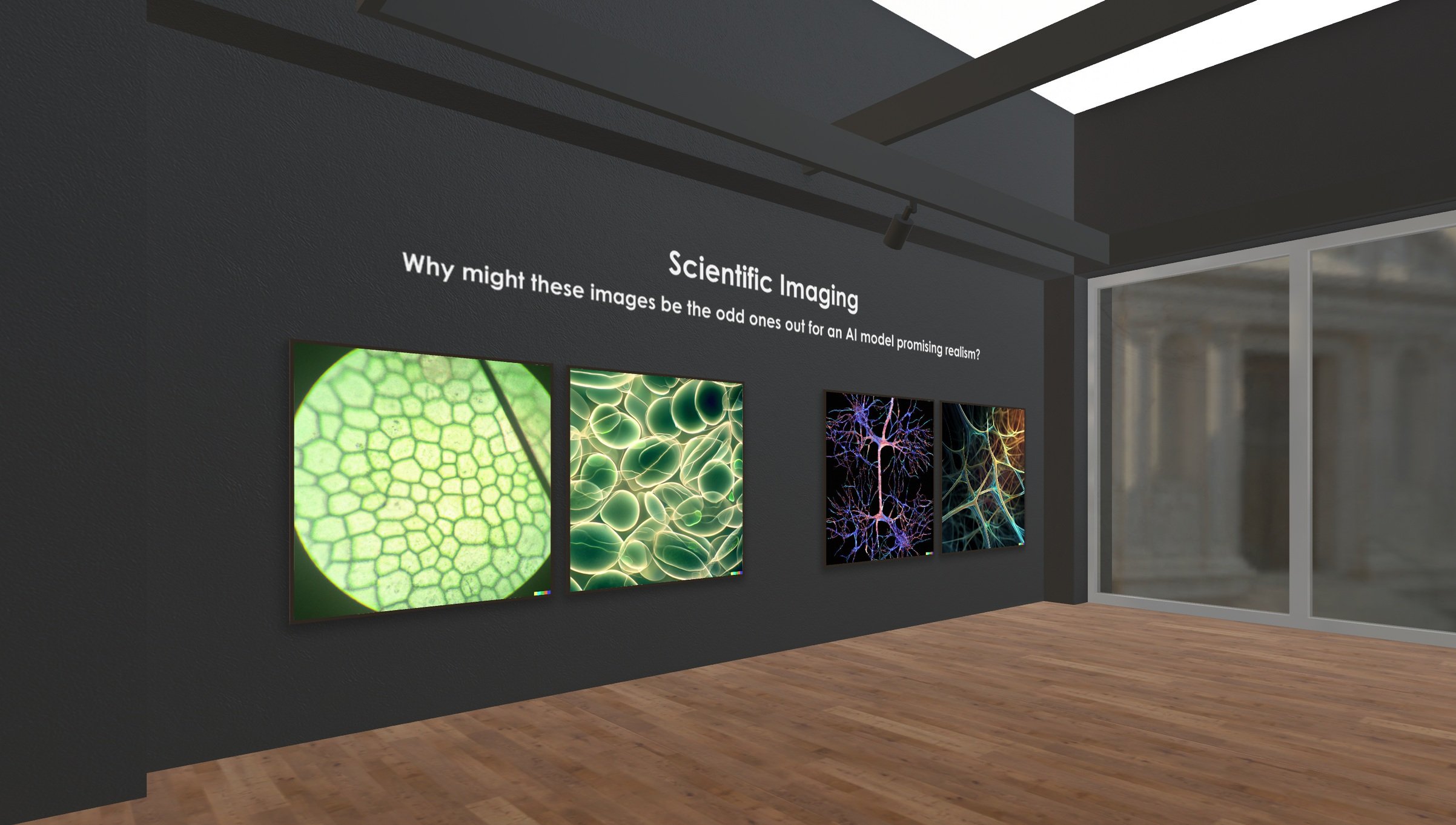

Scientific Imaging
Why might these images be the odd ones out for an AI model promising realism?

Palisade Cells - This pair of images provokes is to question the roles of human input and algorithmic decision-making in artistic and scientific contexts alike. It encourages us to reflect on the potential applications of AI image generation within the STEM fields and how they can be harnessed effectively to enhance understanding and communication in scientific research. In the earlier model we see a very literal representation of the prompt. The generated image shows a clear understanding of what it is like to look into a light microscope eyepiece. The chloroplasts specified by the prompt however are absent. With the correct stain, what other sub-cellular structures might you expect to see in this image of plant cells? Prompt: a light microscope image of plant cells packed with chloroplasts Model: DALL-E v2.0 (2022)

Palisade Cells - This artistic representation of cells observed through a microscope highlights the experimental model's departure from a literal interpretation of the prompt. The resulting image bears little resemblance to what one would typically observe when examining plant tissue under a light microscope. While some may argue that this deviation leads to a more aesthetically pleasing outcome, it is crucial to emphasise that the determination of aesthetic value should ideally rest with the person designing the prompt, rather than the algorithm itself. Throughout this exhibition, we have encountered numerous instances where increased artistic expression has been largely embraced. However, it is important to consider that AI image generation has the potential for widespread utilisation in various STEM fields, where a more faithful and literal depiction may be desired. Prompt: a light microscope image of plant cells packed with chloroplasts Model: DALL-E v2.Exp (2023)

Pyramidal Neurones - Named after their distinctive structure, pyramidal neurones significantly contribute to a wide array of cognitive processes. The image depicted here closely resembles the computer-generated visuals that have captivated both the scientific and artistic community. The term 'dendrite' derives from the Greek word fro tree: 'dendron'. This nomenclature is aptly chosen, as dendrites are branch-like extensions emanating from a neurone's cell body, conducting electrical messages to neighbouring neurone. The detailed complexity and the delicate balance they maintain in conducting brain functions can indeed lead one to lose oneself in awe and admiration. Appreciation of the intricate beauty of neurones transcends disciplinary boundaries. Prompt: Computer simulation of the branching architecture of the dendrites of pyramidal neurones. Model: DALL-E v2.0 (2022)

Pyramidal Neurones - Exploring the mesmerising architecture of neurones provides more than just aesthetic satisfaction, it also invites us into a journey toward comprehending the labyrinthine complexities of the human brain. Just like the previous set of images, we see here a less concretely defined than an image used in scientific research in favour of a more creative interpretation of the prompt. ThIS departure from traditional scientific imaging techniques in favour of a more artistic representation poses an intriguing question about the intersection of art and neuroscience. Does the accuracy of the images hold your fascination, or do you find yourself drawn more towards the more impressionistic portrayal, which invites imagination and emotional engagement? Prompt: Computer simulation of the branching architecture of the dendrites of pyramidal neurones. Model: DALL-E v2.0 (2022)
